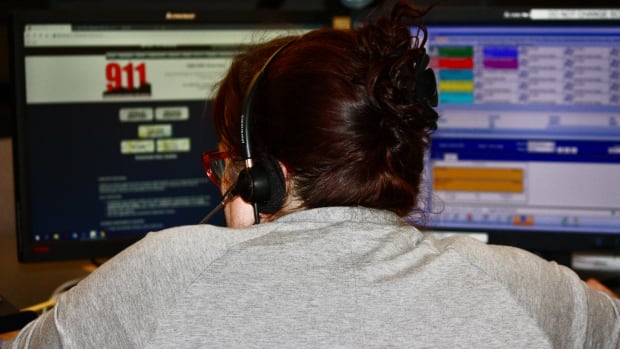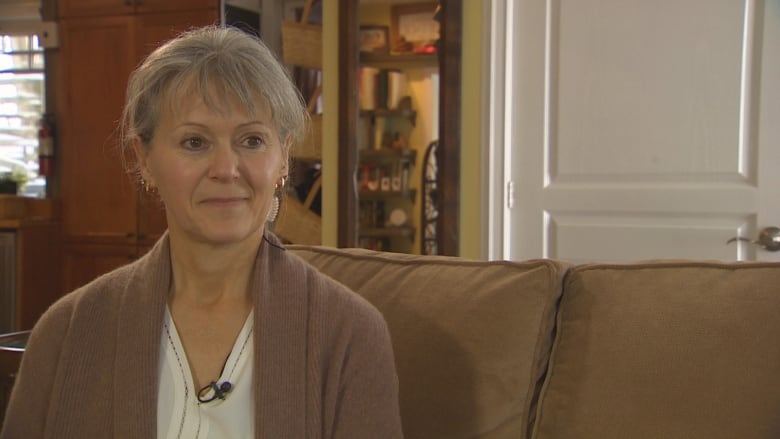
Average wait times on hold for a 911 operator in Toronto went down in the first half of this year after climbing to the longest average wait in at least five years in 2023.
Last year the average wait for an emergency call to be answered was 58 seconds.
From January through the end of June that average dropped to 37 seconds but still fell short of meeting the industry standard every day but one, according to internal reports obtained by CBC Toronto through a Freedom of Information request.
A small drop in call volume and better staffing numbers are largely responsible for that improvement, according to Toronto Police Communications Services, which answers all 911 calls for the city.
“Staffing has the greatest impact,” said manager Kerry Murray-Bates. “We have had two staffing reviews done in the past five years — both indicate we need more staffing based on the call volume.”
The National Emergency Association (NENA) has set the industry standard of answering 90 per cent of calls within 15 seconds.
To get the Toronto communications centre to where it can regularly hit that target, Murray-Bates says staffing needs to increase to match the workload.
“It’s all dependent on our police budget,” she said. “We are one of many units that is vying for those budget dollars in order to make that come to fruition.”
In January 2022, a CBC Toronto investigation revealed how long wait times on hold for 911 were more than one-offs in Canada’s largest city amid burnout-fuelled staffing shortages. Later the same year, a report from Toronto’s Auditor General found that staffing problems and call volume were at the heart of call-answering delays and said the service needed to hire more operators.
Despite those findings, internal reports obtained by CBC Toronto show average wait times continued getting longer until this year.
Training affects wait times
Murray-Bates attributes the longer wait times in part to significant hiring and training efforts over the last few years.
New call operators undergo 18 months of training. In 2022, the communication centre hired 68 call operators to fill vacancies and then another 53 in 2023.
“The more training we do, the more people I have to take off the phones,” said Murray-Bates. “It’s a double-edged sword. You gotta do it — these are the best people to do the training — but it impacts the staffing on the floor.”
Current staffing will hit the budgeted capacity of around 300 call takers and dispatchers when the 32 people set to begin training next month are hired, according to Murray-Bates.
‘Massive crisis’ in finding 911 operators
But finding and retaining the right people to fill vacancies presents its own challenges, says Holly Barkwell, the Canadian region director of NENA.
“We have a massive crisis in not just Canada, but the U.S. and globally, of finding enough people to hire,” Barkwell said. “So even if we have the blessing and the okay to go hire people, we can’t necessarily fill all the positions that we need to.”

For Toronto police to find 32 recruits to fill a class, like those who start training in October, Murray-Bates said hiring managers will typically go through 2,000 to 2,500 applicants. And even after that, there are still recruits who fail or decide the job isn’t for them during their training.
To try and mitigate losing recruits deep into training, Murray-Bates said they’ve added a job shadowing shift when hiring, so potential recruits get a sense of the work before starting training.
“We’ve seen that some people have come out [of that shift] and said ‘This is just not for me,'” said Murray-Bates. “The positive part of that is that they didn’t get to call taking and actually working, and we were able to put someone else in the class so we didn’t kind of lose that spot.”
Next Generation 911
The police communication centre also hopes that new technology can help streamline answering calls and bring down wait times.
This July, Toronto launched the first phase of Next Generation 911, which will see the service, along with all 911 communication centres across the country, switch from an analog to internet-based platform for calls as mandated by the CRTC. The full jump from copper wire-based calls to digital is expected to be complete before the end of this year in Toronto, Murray-Bates said.
In the short term, she said, the new system will help save time. It will automate call and text responses to hang-up calls, remove the need to put callers on hold to patch in a translator — and it can also provide much more accurate location data on the caller.
And in a few years, the countrywide system is expected to roll out texting and the ability to send photos or videos to 911. It’s still unclear how those new options will affect staffing, but Barkwell says conversations around that are underway across the industry.
“We don’t have enough data yet,” Barkwell said. “But we anticipate that yes, dealing with the text message call will take significantly longer than dealing with the voice call.”
Goal is to meet standard every day
From the beginning of the year to June 30, the longest average daily 911 wait time in Toronto had dropped significantly compared to last year.
In the first half of 2024, the average daily time on hold for an emergency call was never longer than two minutes, unlike 2023, where the average was two minutes or longer on 17 days. Overall, the average wait on hold was a minute or longer on 156 days in 2023, but in the first half of 2024 that was only the case on 25 days.
Despite those improvements, the averages are still far from hitting NENA’s industry standard of answering most calls within 15 seconds. Meeting that standard every day in Toronto is the goal, according to Murray-Bates.
“That would be us providing the best service we can to our community,” she said. “It’s better for our members — it reduces their stress. It’s stressful enough, the calls for service, but the idea that there are calls waiting doubles their stress because they don’t know what that call is.”

